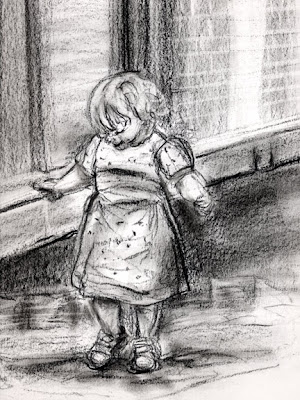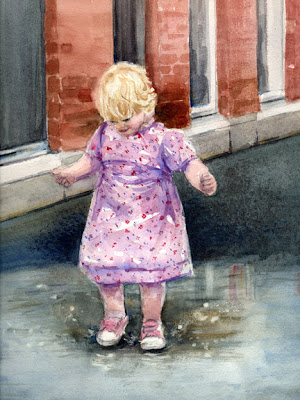
Today, I'd like to share a little bit with you about the value of doing studies before beginning a painting or drawing that you will be investing a longer amount of time developing.
Don't worry, it is not nearly as painful as getting ready for an exam! It's actually fun, believe it or not, and a great day to get your creative ideas flowing. In addition to looking at the values that are already apparent in a scene, you can add and change values around so that they look even BETTER than what you are actually seeing. It is one of the great things about being an artist. YOU get to choose how to portray your vision.
Studies are great to do in your sketchbook or art journal. I usually start with a value study that is true to the scene- blocking in the range of lights and darks that I actually see, in large areas first- no detail at this stage.
These types of studies can be quick or more developed, but I generally spend between five and fifteen minutes on a basic value study. It is just a tool, and not generally very striking on its own.
Next, I will do a second value study, but this time, will edit reality to my liking. I might add some additional dark areas to balance out the composition, or move things a round a bit. It is a little like making a map at this point, and you are moving puzzle pieces around until you like what you see.
Once I get to that point, I will do a bit more detailed value and developed gesture drawing of the scene, like you see above (about 30 to 45 minutes, give or take). We will begin going into the power of gesture tomorrow, but for now, look at the values in the drawing, and how they relate to the final watercolor painting below.
I am out all morning today, but when I return, I will try to locate my original value sketches for this painting, so that you can see what they looked like in the early stages, or I will re-create them for you and revise the post. This will get you going for now.
Why don't you take something you'd like to paint or draw and try the techniques described above as a way to start. There are two reasons why this tends to keep life in your work- first, you are really looking at the full range of lights and darks and are beginning to use them to your advantage as you plan your painting. Secondly, after you have drawn the scene a few different ways, your brain relaxes, and you can get right to the creative part when you begin the actual painting.
Try this, and I think you'll find that "study"ing (in art) really pays off!


No comments:
Post a Comment